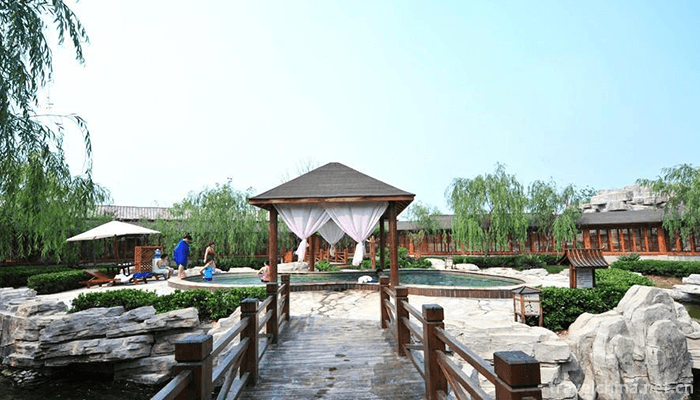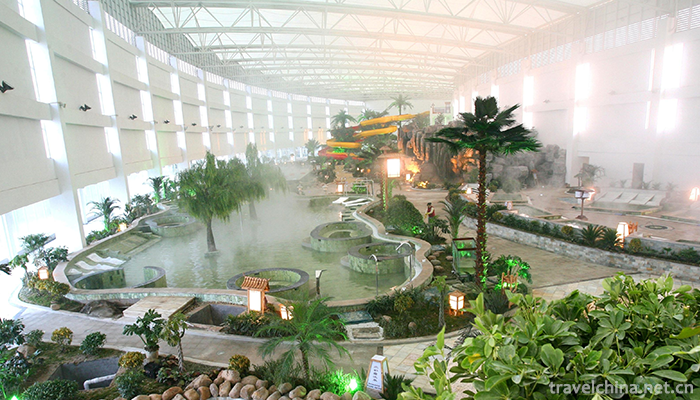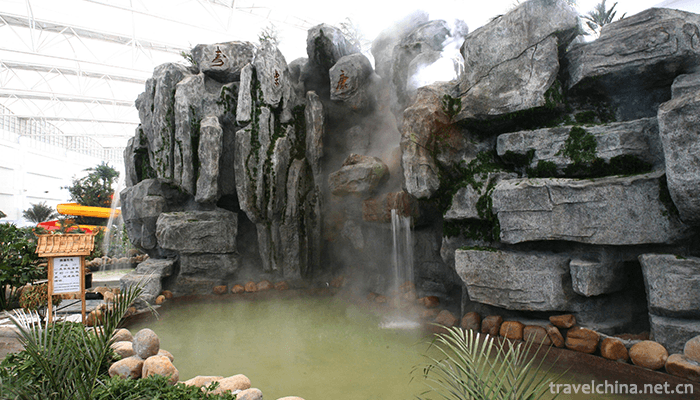Tianmujiang Beishuicheng Hot Spring Resort
Tianmu Jiangbeishuicheng Hot Spring Resort is the third five-star resort hotel developed by Tianmu Group in Guanxian County of Shandong Province after Tianmu, Lushan Hot Spring Resort of Jiangxi Province and Mingyueshan Hot Spring Resort of Tianmu Jiangxi Province. The resort is located in Majiahe Forest Farm, Guanxian County, which is rich in ecological resources. It is only 18 kilometers away from Liaocheng District, 98 kilometers east to Jinan and 130 kilometers west to Handan.
Tianmu River Beishuicheng Hot Spring Resort Project is developed in two phases, covering an area of about 660 mu, with a total investment of about 220 million yuan. With the theme of "bathing Garden Hot springs, absorbing fresh air, living in hydrophilic rooms and eating green food", the largest ecological garden leisure resort in Western Shandong will be built, which integrates eating, living, traveling, entertaining and purchasing. The first phase of the project has a total construction area of about 33200 square meters and an investment of about 150 million yuan. It mainly focuses on hot spring health preservation and water park, including catering, guest rooms, hot springs, conferences, entertainment, fitness and recuperation. The second phase of the project will develop high-end resorts such as golf stadium and leisure villas.
The hot spring water of Tianmujiang Beishuicheng Hot Spring Resort gushes from the depth of more than 500 meters underground, with a sunrise of 7000 tons and a water temperature of about 57 degrees centigrade all the year round. According to research, Jiangbei Shuicheng hot spring water contains 70-90 mg/l of soluble silicon oxide, which meets the classification standard of national silicic acid spring. Water is rich in silicic acid and 48 kinds of trace elements beneficial to human body. It is colorless, tasteless and delicate. It has remarkable curative effect on skin, cardiovascular, digestive and urinary systems. Rich mineral content, mild water quality and abundant reserves are rare health hot springs in North China.
The first phase of the project makes full use of the purification of air by trees, the elimination of noise and the special aromatic substances and negative ions emitted naturally during the growth of trees, combined with the special health and recuperation functions of hot springs, to improve the disorders of central nervous system and vegetative nervous system caused by long-term living in cities. At present, the completed hot spring project has 6990 square meters of large indoor hot spring hall, including 25 special functional hot spring areas such as characteristic fish therapy, Chinese herbal medicine series, beauty and beauty preservation series, SPA hydrotherapy series; 13 500 square meters of outdoor open-air hot spring area has more than 30 functional baths featuring world style bathing, cave hot spring bathing, Taiji Batang; at the same time, the introduction of internationally popular dynamic water. Recreational facilities such as artificial wave pool, Python slide, counter-current swimming pool, functional pool, etc., allow guests to fully enjoy the infinite fun of hot springs between movement and quiet. Every hot spring pool in the resort adopts the current most popular "uninterrupted water injection and natural drainage" water circulation design. Every day, the water is drained, cleared and disinfected in sequence, and the water quality and sanitation of the spring water are always maintained. There are also dry steaming room, wet steaming room and gymnasium in the hot spring area. On the second floor of the hot spring department, there are aromatherapy room, beauty salon, chess and card room, massage room, self-paid Internet bar and luxurious high-end lounge. The lounge provides free fresh fruits and delicious drinks for guests to bathe in the hot spring.



0 Questions
Ask a Question
Your email address will not be published.